
Hyundai ix35 Estate (2010-2015) engines, drive and performance
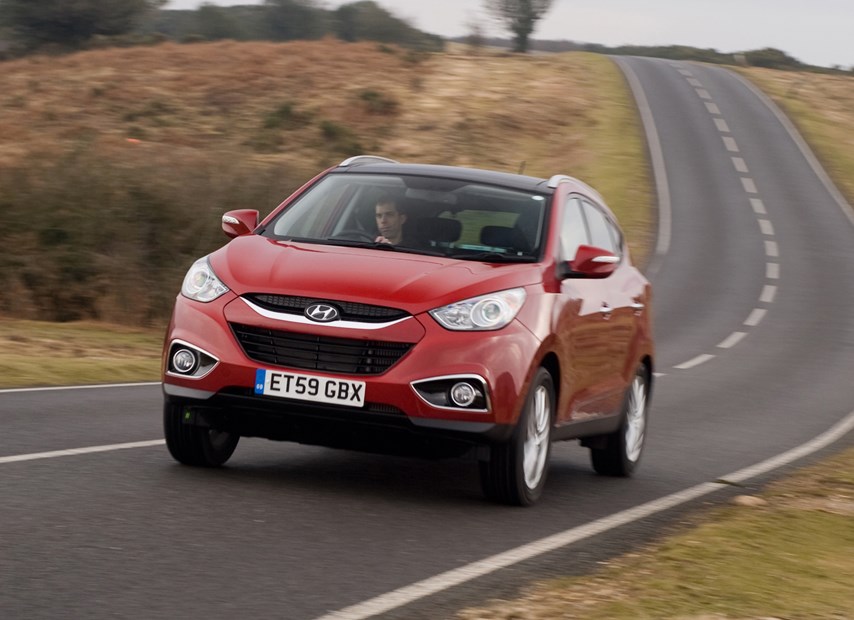
Hyundai ix35 performance depends on whether you opt for petrol or diesel. There is the choice of two diesels or two petrol engines.
Diesel engines
The Hyundai ix35’s 2.0 CRDi diesel is the most popular choice and it’s easy to see why. It’s a mightily impressive engine with a refined nature and plenty of low down pulling power, while noise levels are pleasantly low, especially at motorway cruising speeds.
It delivers a maximum of 134bhp and there’s no turbo lag when accelerating from low revs, helped by the slick six-speed manual gearbox.
It’s now only available with four-wheel drive and there is a 181bhp version with six-speed automatic gearbox for the top spec Premium model that needs just 9.8 seconds to cover 0-62mph.
A 1.7-litre turbodiesel is also available with 114bhp and two-wheel drive only. It dishes up 0-62mph in 12.4 seconds and a respectable 48.7mpg average economy, though it does feel a shade underpowered in most conditions.
Petrol engines
The petrol engine originally offered in the Hyundai ix35 was a 2.0-litre with 161bhp – only available in Style trim.It has now been replaced by Hyundai’s 1.6-litre engine with 133bhp that gives 0-62mph in 11.1 seconds and only comes in front-wheel drive.
It can be ordered as standard or fitted with stop-start, which lowers carbon dioxide emissions from 158g/km to 149g/km and ups economy to 44.1mpg from 41.5mpg. It’s a punchy engine and does good service in the ix35.
Parkers recommends
Unless you cover very few miles and fancy the petrol engine, we’d go straight for the 134bhp 2.0-litre turbodiesel that offers the best balance of power, economy and driving fun.
It may look like a four-wheel drive, but the ix35 uses an advanced suspension system that you’d usually find on more expensive saloon and estate cars. The result is impressive handling with little body roll and a composed feel in corners.
The ride is a little on the firm side but it’s not rough and irons uneven surfaces well, especially in town where it soaks up potholes and speed humps with ease.
Electronic stability control (ESP) is standard but for extra reassurance there’s the choice of four-wheel drive with the 2.0-litre CRDi engine. This is ideal if you regularly have to tackle slippery or boggy tracks, plus it’s great in the snow. It delivers power to the front wheels in normal conditions (so not wasting fuel) but if a wheel loses grip, transfers some of the power to the rear wheels to maintain momentum.
However, in trickier conditions, a button on the dash allows you to lock the 4WD system permanently. This works up to 25mph and splits power equally between the front and rear wheels. The steering is responsive and pretty direct but does lack a little in feel and can be too eager to self-centre.


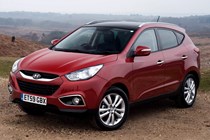
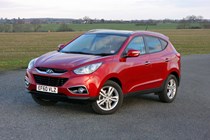
.jpg)
.jpg)
.jpg)
.jpg)
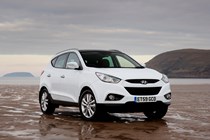

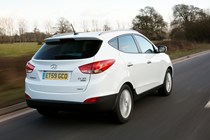
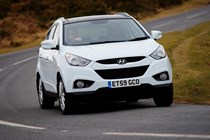
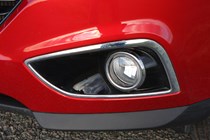

.jpg)
.jpg)
.jpg)
.jpg)
.jpg)
.jpg)
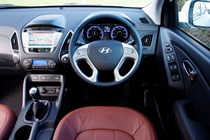
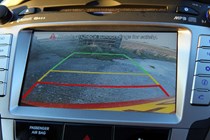
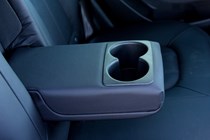
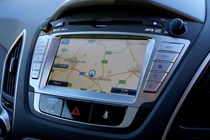
.jpg)
.jpg)
.jpg)
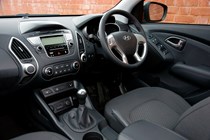
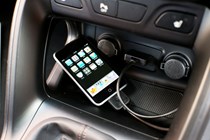
.jpg)
.jpg)
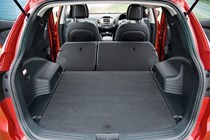
.jpg)


.jpg?quality=50)
.jpg?quality=50)
.jpg?quality=50)
.jpg?quality=50)






.jpg?quality=50)
.jpg?quality=50)
.jpg?quality=50)
.jpg?quality=50)
.jpg?quality=50)
.jpg?quality=50)




.jpg?quality=50)
.jpg?quality=50)
.jpg?quality=50)


.jpg?quality=50)
.jpg?quality=50)

.jpg?quality=50)